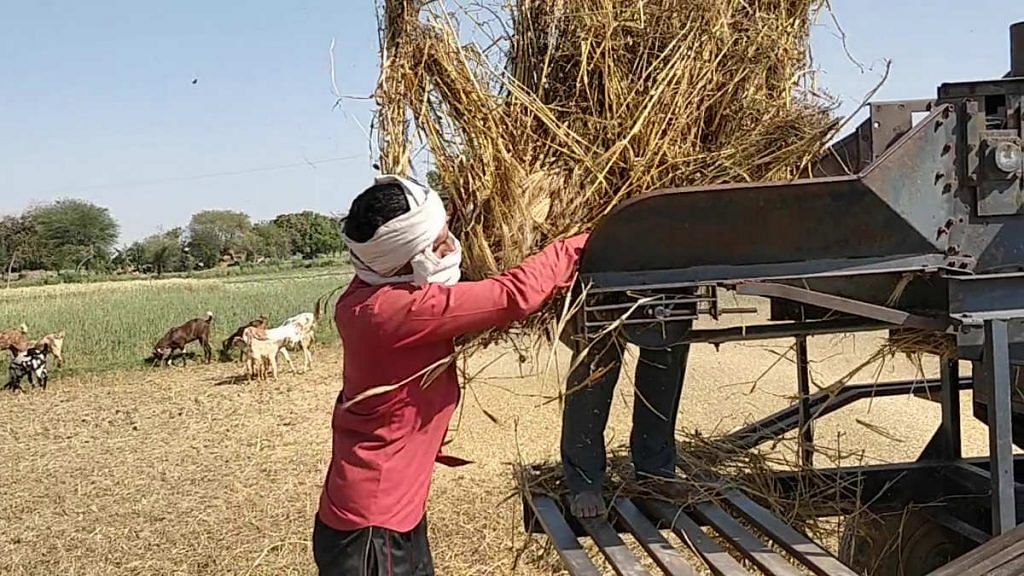As India eases the lockdown this week, there is fear that nothing has been gained in the past few painful weeks, and the novel coronavirus will started spreading again. Looking at liquor queues in urban India, it may be tempting to think so, but the fears may be overblown at the scale of the economy as a whole.
The behaviour of governments, individuals and businesses will reshape the Indian economy, and safer activities and locations will flourish more. If supported by the right policy framework, agriculture and rural industry could be one of India’s biggest strengths.
Epidemiological models predicted a larger number of cases and deaths across many countries than actually observed. In the absence of a vaccine, what explains this? Economists explain the phenomenon by changes in behaviour — of both governments and people — which fits the old intuition in economic analysis that agents respond to incentives.
John Cochrane, for example, presents a behavioural ‘SIR model’, in which the rate at which people transition from ‘Susceptible’ to ‘Infectious’ to ‘Recovered’ is shaped by their behaviour.
So far, there are broadly two changes that have affected the spread of the virus. The first is the policy change — lockdowns enforced by many governments — while the second is behavioural changes among individuals — wearing masks, washing hands, physical distancing, etc.
Also read: Agriculture sector to grow at 3% in 2020-21 despite Covid-19 lockdown: Modi govt
Change in governments’ behaviour
Governments across the world responded to the fear — of a large number of deaths, of hospitals being overburdened, and of the accusation that the government was not doing anything — in a short period of time. UK Prime Minister Boris Johnson and US President Donald Trump shifted away from their earlier light stance to heavy government intervention.
Across the world, fiscal packages were announced, medical preparedness was increased, penalties were enforced for those stepping out. The number of deaths and cases were contained.
But soon, it became clear everywhere that no matter how much the government provided, the economy was going to be devastated. Governments have again responded, this time to the news of falling production, layoffs, shutting operations, unemployment, hunger, deaths from other diseases, and human restlessness from being locked up.
Most countries have started easing population-wide lockdowns this week, even though there is still no vaccine and no herd immunity. The new mantra is learning to live with the virus.
Having seen the impact of the lockdown on the economy, and equally importantly, on tax revenue, it is much less likely that governments will announce a second round of complete nationwide lockdowns. The strategy going forward will depend far more on test, trace, isolate and treat. Instead of isolation for all, the focus is likely to be on isolation of individuals, families, workplaces, buildings, and tight containment clusters. Governments will continue to prohibit super-spreaders like large congregations for religion, sports, politics, weddings, etc.
Also read: Modi govt is being sensible by not announcing a large fiscal package to help revive economy
Change in individual behaviour
Individual behaviour will also change to avoid getting sick. Since the lockdowns, both national and international media, official or social, have spoken about almost nothing but the coronavirus. This has been undoubtedly the biggest awareness campaign in human history.
By now, most people are aware of the risks of being sick, and of habits that reduce the risk of contracting the virus. In addition, when social norms such as not spitting in public, wearing masks, testing if at risk, protecting the co-morbid and the elderly, etc. are enforced, the risk of spread comes down. Transparency, truth and trust will be critical for containment.
In dense urban populations, physical distancing is, no doubt, difficult. In the 30 per cent households in India who have at least one person above 60, according to the 2011 Census, distancing is hard. Yet, in contrast to the normal human behaviour of sitting close, sharing food and drink, if each person contributes to containing the virus, even by a small amount, the spread slows down.
Also read: India’s young people can be the corona-warriors who’ll put the economy back on track
The opportunity for rural India
In addition to changing personal and social behaviour, the economy might change. Looking forward, if there is no universal access to a Covid-19 vaccine for another 18-24 months, then businesses in safer sectors and locations are likely to do well, while those at high risk may not even restart operations.
While liquidity is today one of the biggest obstacles for the revival of business, we may find that even if credit is available, the possibility of another lockdown, of disrupted supply chains, of missing labour, of higher costs, and of unstable demand, may discourage many businesses from re-starting operations in dense urban clusters.
In contrast, the least risk of the spread of the virus, and thus another lockdown, is in rural India, where it is naturally easier to have physical distancing and outdoor work. This may shift the focus from urban markets to rural markets, for both demand and production.
Livestock, fisheries, dairy, vegetables, fruit and food processing are more labour-intensive and high value-yielding. After many decades of neglect in research and development, lack of market access, on-off policies for exports, and market distortions, the present adversity may be a timely opportunity for this sector.
It would need support of a suitable policy framework and reforms in pricing policy, tax, market access, credit and rural infrastructure, like warehouses and cold storage. The next two years or so of how we learn to live with coronavirus can redesign the economy towards safer and more sustainable production and consumption, with agriculture and the rural economy as its strength, rather than its weakness.
Also read: Agriculture, manufacturing units will drive GDP but more relief needed, say industry bodies
